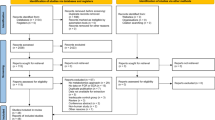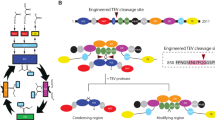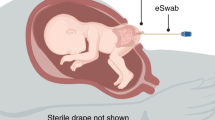Abstract
Vernix suspended in amniotic fluid is normally swallowed by the late term fetus. We hypothesized that branched chain fatty acids (BCFA), long known to be major vernix components, would be found in meconium and that the profiles would differ systematically. Vernix and meconium were collected from term newborns and analyzed. BCFA-containing lipids constituted about 12% of vernix dry weight, and were predominantly saturated, and had 11–26 carbons per BCFA. In contrast, meconium BCFA had 16–26 carbons, and were about 1% of dry weight. Meconium BCFA were mostly in the iso-configuration, whereas vernix BCFA contained dimethyl and middle chain branching, and five anteiso-BCFA. The mass of BCFA entering the fetal gut as swallowed vernix particles is estimated to be 180 mg in the last month of gestation whereas the total mass of BCFA found in meconium is estimated to be 16 mg, thus most BCFA disappear from the fetal gut. The BCFA profiles of vernix and meconium show that BCFA are major components of normal healthy term newborn gastrointestinal tract. BCFA are candidates for agents that play a role in gut colonization and should be considered a nutritional component for the fetus/newborn.
Similar content being viewed by others
Log in or create a free account to read this content
Gain free access to this article, as well as selected content from this journal and more on nature.com
or
Abbreviations
- BCFA:
-
branched-chain fatty acids
- GC:
-
gas chromatography
- GI:
-
gastrointestinal
- FA:
-
fatty acids
- FAME:
-
fatty acid methyl esters
- MS:
-
mass spectrometry
- MUFA:
-
monounsaturated fatty acids
- SE:
-
sterol esters
- SFA:
-
saturated fatty acids
- TAG:
-
triacylglycerol
- WE:
-
wax esters
References
Nicolaides N, Ray T 1965 Skin Lipids. 3. Fatty chains in skin lipids. The use of vernix caseosa to differentiate between endogenous and exogenous components in human skin surface lipid. J Am Oil Chem Soc 42: 702–707
Pickens WL, Warner RR, Boissy YL, Boissy RE, Hoath SB 2000 Characterization of vernix caseosa: water content, morphology, and elemental analysis. J Invest Dermatol 115: 875–881
Narendran V, Wickett RR, Pickens WL, Hoath SB 2000 Interaction between pulmonary surfactant and vernix: a potential mechanism for induction of amniotic fluid turbidity. Pediatr Res 48: 120–124
Moore C, Dempsey D, Deitermann D, Lewis D, Leikin J 1996 Fetal cocaine exposure: analysis of vernix caseosa. J Anal Toxicol 20: 509–511
Yoshio H, Tollin M, Gudmundsson GH, Lagercrantz H, Jornvall H, Marchini G, Agerberth B 2003 Antimicrobial polypeptides of human vernix caseosa and amniotic fluid: implications for newborn innate defense. Pediatr Res 53: 211–216
Miettinen TA, Luukkainen T 1968 Gas-liquid chromatographic and mass spectrometric studies on sterols in vernix caseosa, amniotic fluid and meconium. Acta Chem Scand 22: 2603–2612
Sherman DJ, Ross MG, Day L, Ervin MG 1990 Fetal swallowing: correlation of electromyography and esophageal fluid flow. Am J Physiol 258: R1386–R1394
Hoeger PH, Schreiner V, Klaassen IA, Enzmann CC, Friedrichs K, Bleck O 2002 Epidermal barrier lipids in human vernix caseosa: corresponding ceramide pattern in vernix and fetal skin. Br J Dermatol 146: 194–201
Nicolaides N, Fu HC, Ansari MN, Rice GR 1972 The fatty acids of wax esters and sterol esters from vernix caseosa and from human skin surface lipid. Lipids 7: 506–517
Rissmann R, Groenink HW, Weerheim AM, Hoath SB, Ponec M, Bouwstra JA 2006 New insights into ultrastructure, lipid composition and organization of vernix caseosa. J Invest Dermatol 126: 1823–1833
Kaerkkaeinen J, Nikkari T, Ruponen S, Haahti E 1965 Lipids of Vernix Caseosa. J Invest Dermatol 44: 333–338
Tollin M, Bergsson G, Kai-Larsen Y, Lengqvist J, Sjovall J, Griffiths W, Skuladottir GV, Haraldsson A, Jornvall H, Gudmundsson GH, Agerberth B 2005 Vernix caseosa as a multi-component defence system based on polypeptides, lipids and their interactions. Cell Mol Life Sci 62: 2390–2399
Nazzaro-Porro M, Passi S, Boniforti L, Belsito F 1979 Effects of aging on fatty acids in skin surface lipids. J Invest Dermatol 73: 112–117
Nicolaides N 1974 Skin lipids: their biochemical uniqueness. Science 186: 19–26
Jensen RG 1995 Handbook of Milk Composition. San Diego, Academic Press Inc
Egge H, Murawski U, Ryhage R, Gyorgy P, Chatranon W, Zilliken F 1972 Minor constituents of human milk. IV. Analysis of the branched chain fatty acids. Chem Phys Lipids 8: 42–55
Gibson RA, Kneebone GM 1981 Fatty acid composition of human colostrum and mature breast milk. Am J Clin Nutr 34: 252–257
Ahanya SN, Lakshmanan J, Morgan BL, Ross MG 2005 Meconium passage in utero: mechanisms, consequences, and management. Obstet Gynecol Surv 60: 45–56; quiz 73–44.
Gareri J, Klein J, Koren G 2006 Drugs of abuse testing in meconium. Clin Chim Acta 366: 101–111
Ostrea EM Jr Hernandez JD, Bielawski DM, Kan JM, Leonardo GM, Abela MB, Church MW, Hannigan JH, Janisse JJ, Ager JW, Sokol RJ 2006 Fatty acid ethyl esters in meconium: are they biomarkers of fetal alcohol exposure and effect?. Alcohol Clin Exp Res 30: 1152–1159
Buchanan DJ, Rapoport S 1952 Chemical comparison of normal meconium and meconium from a patient with meconium ileus. Pediatrics 9: 304–310
Righetti C, Peroni DG, Pietrobelli A, Zancanaro C 2003 Proton nuclear magnetic resonance analysis of meconium composition in newborns. J Pediatr Gastroenterol Nutr 36: 498–501
Terasaka D, Clark DA, Singh BN, Rokahr J 1986 Free fatty acids of human meconium. Biol Neonate 50: 16–20
Bligh EG, Dyer WJ 1959 A rapid method of total lipid extraction and purification. Can J Biochem Physiol 37: 911–917
Serhan CN, Gotlinger K, Hong S, Lu Y, Siegelman J, Baer T, Yang R, Colgan SP, Petasis NA 2006 Anti-inflammatory actions of neuroprotectin D1/protectin D1 and its natural stereoisomers: assignments of dihydroxy-containing docosatrienes. J Immunol 176: 1848–1859
Carballeira NM, Miranda C, Lozano CM, Nechev JT, Ivanova A, Ilieva M, Tzvetkova I, Stefanov K 2001 Characterization of novel methyl-branched chain fatty acids from a halophilic Bacillus species. J Nat Prod 64: 256–259
Suutari M, Laakso S 1993 Signature GLC-MS ions in identification of [Delta]5- and [Delta]9 unsaturated iso- and anteiso-branched fatty acids. J Microbiol Methods 17: 39–48
Karlsson H, Odham G 1969 Studies on feather waxes of birds. VIII. Composition of the wax in the free-flowing secretion from the preen gland of the oystercatcher (Haematopus ostralegus). Ark Kemi 31: 143–158
Yu QT, Liu BN, Zhang JY, Huang ZH 1988 Location of methyl branchings in fatty acids: fatty acids in uropygial secretion of Shanghai duck by GC-MS of 4,4-dimethyloxazoline derivatives. Lipids 23: 804–810
Apon JM, Nicolaides N 1975 The determination of the position isomers of the methyl branches fatty acids methyl esters by capillary GC/MS. J Chromatogr Sci 13: 467–473
Harvey DJ 1989 Identification of long-chain fatty acids and alcohols from human cerumen by the use of picolinyl and nicotinate esters. Biomed Environ Mass Spectrom 18: 719–723
Chen ZY, Pelletier G, Hollywood R, Ratnayake WM 1995 Trans fatty acid isomers in Canadian human milk. Lipids 30: 15–21
Aitchison JM, Dunkley WL, Canolty NL, Smith LM 1977 Influence of diet on trans fatty acids in human milk. Am J Clin Nutr 30: 2006–2015
Corso G, Colavita C, Esposito M, Roma R, Napoli C, Zamparelli M, Ansanelli V 1995 Gaschromatography-mass spectrometry analysis of fatty acids in human milk from forty puerperae living in southern Italy. Riv Eur Sci Med Farmacol 17: 215–219
Brenna JT, Varamini B, Jensen RG, Diersen-Schade DA, Boettcher JA, Arterburn LM 2007 Docosahexaenoic and arachidonic acid concentrations in human breast milk worldwide. Am J Clin Nutr 85: 1457–1464
Kaneda T 1991 Iso- and anteiso-fatty acids in bacteria: biosynthesis, function, and taxonomic significance. Microbiol Rev 55: 288–302
Huang HY, Huang SY, Chen PY, King VA, Lin YP, Tsen JH 2007 Basic characteristics of Sporolactobacillus inulinus BCRC 14647 for potential probiotic properties. Curr Microbiol 54: 396–404
Veerkamp JH 1971 Fatty acid composition of Bifidobacterium and Lactobacillus strains. J Bacteriol 108: 861–867
Caplan MS, Miller-Catchpole R, Kaup S, Russell T, Lickerman M, Amer M, Xiao Y, Thomson R Jr 1999 Bifidobacterial supplementation reduces the incidence of necrotizing enterocolitis in a neonatal rat model. Gastroenterology 117: 577–583
Claud EC, Walker WA 2001 Hypothesis: inappropriate colonization of the premature intestine can cause neonatal necrotizing enterocolitis. FASEB J 15: 1398–1403
Hallstrom M, Eerola E, Vuento R, Janas M, Tammela O 2004 Effects of mode of delivery and necrotising enterocolitis on the intestinal microflora in preterm infants. Eur J Clin Microbiol Infect Dis 23: 463–470
Beeby PJ, Jeffery H 1992 Risk factors for necrotising enterocolitis: the influence of gestational age. Arch Dis Child 67: 432–435
Lucas A, Cole TJ 1990 Breast milk and neonatal necrotising enterocolitis. Lancet 336: 1519–1523
Hoyos AB 1999 Reduced incidence of necrotizing enterocolitis associated with enteral administration of Lactobacillus acidophilus and Bifidobacterium infantis to neonates in an intensive care unit. Int J Infect Dis 3: 197–202
Biezenski JJ, Pomerance W, Goodman J 1968 Studies on the origin of amniotic fluid lipids. I. Normal composition. Am J Obstet Gynecol 102: 853–861
Pritchard JA 1965 Deglutition by normal and anencephalic fetuses. Obstet Gynecol 25: 289–297
Pritchard JA 1966 Fetal swallowing and amniotic fluid volume. Obstet Gynecol 28: 606–610
Friel JK, Matthew JD, Andrews WL, Skinner CT 1989 Trace elements in meconium from preterm and full-term infants. Biol Neonate 55: 214–217
Nicolaides N, Apon JM 1976 Further studies of the saturated methyl branched fatty acids of vernix caseosa lipid. Lipids 11: 781–790
Nicolaides N 1971 The structures of the branched fatty acids in the wax esters of vernix caseosa. Lipids 6: 901–905
Haahti E, Nikkari T, Salmi AM, Laaksonen AL 1961 Fatty acids of vernix caseosa. Scand J Clin Lab Invest 13: 70–73
Livingston M, Bell ME, Shorland FB, Gerson T, Hansen RP 1957 The metabolism in the rat of naturally occurring (+)-14-methylhexadecanoic acid. Biochem J 65: 438–440
Author information
Authors and Affiliations
Corresponding author
Additional information
Supported by NIH grant GM071534.
Rights and permissions
About this article
Cite this article
Ran-Ressler, R., Devapatla, S., Lawrence, P. et al. Branched Chain Fatty Acids Are Constituents of the Normal Healthy Newborn Gastrointestinal Tract. Pediatr Res 64, 605–609 (2008). https://doi.org/10.1203/PDR.0b013e318184d2e6
Received:
Accepted:
Issue date:
DOI: https://doi.org/10.1203/PDR.0b013e318184d2e6
This article is cited by
-
Evaluation of Four Multispecies Probiotic Cocktails in a Human Colonic Fermentation Model
Probiotics and Antimicrobial Proteins (2023)
-
“We have to clean ourselves to ensure that our children are healthy and beautiful”: findings from a qualitative assessment of a hand hygiene poster in rural Uganda
BMC Public Health (2019)
-
Combining Charge-Switch Derivatization with Ozone-Induced Dissociation for Fatty Acid Analysis
Journal of the American Society for Mass Spectrometry (2019)
-
Enzyme promiscuity drives branched-chain fatty acid synthesis in adipose tissues
Nature Chemical Biology (2018)
-
Sea Lions Develop Human-like Vernix Caseosa Delivering Branched Fats and Squalene to the GI Tract
Scientific Reports (2018)



